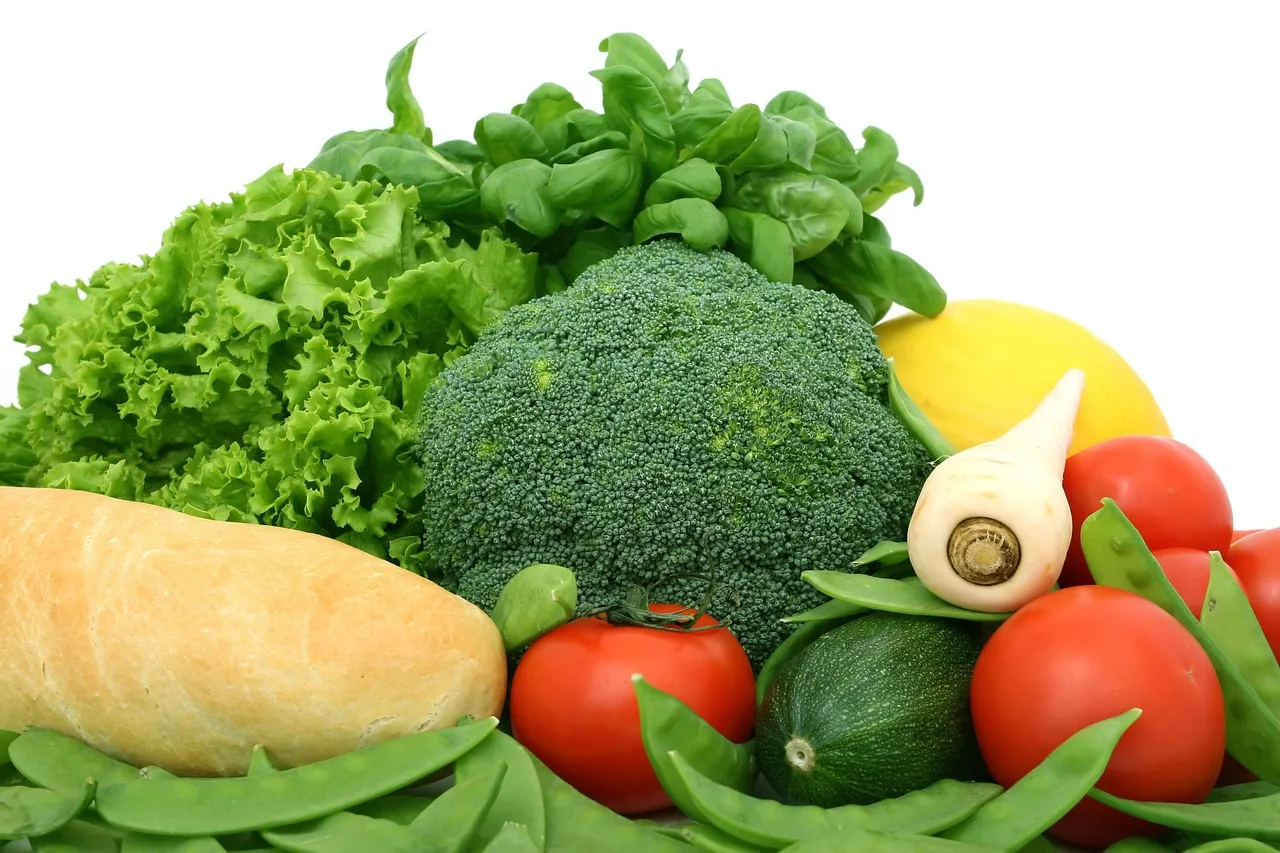Numerous researches have shown that vegetables and fruits are the best food for humans. They contain all the vitamins, fibers, and minerals we need. Therefore, it’s no surprise that veggies and fruits are an indispensable part of our daily diet. However, just because something is good for us, doesn’t mean it’s good for our dogs. What vegetables can dogs eat is one of the most asked questions on the forums.
It’s understandable for owners, especially new ones, to ask this question. We all want what’s best for our dogs. However, with so many different types of vegetables, it can be a bit tricky to know which ones are safe for your dog.
Luckily for you, we have created a complete list of the vegetables your dog can eat and those toxic to dogs.
If you are interested in what fruits can dogs eat and which are toxic, you can check it HERE.
So, What Vegetables Can Dogs Eat?
We will divide this vegetable list into three distinct parts.
- Those good for your dog.
- Those your dog can eat with some level of risk.
- Those your dog should never eat.
Vegetables That Dogs Can Eat
Can Dogs Eat Bell Peppers?
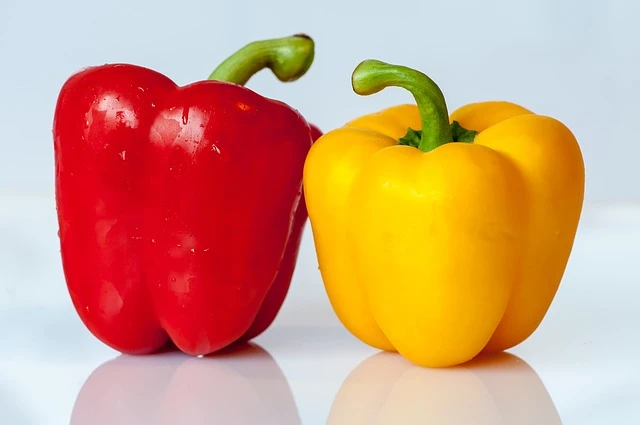
Bell Peppers are excellent for dogs. Packed with nutrients, rich in vitamins A, B6, C, E, and beta-carotene, bell peppers have many health benefits. Most importantly, they strengthen the dog’s immune system, but they are also good for the eye, coat, and skin health. However, don’t overload your dog with peppers, as this will cause Gastrointestinal upset. Therefore, dogs should have a moderate portion of bell peppers. Smaller dog breeds can eat less than one-quarter bell pepper at a time, while large dog breeds can eat less than one-half bell pepper.
Can Bell Peppers Be Bad For My Dog?
Remember, dogs are carnivores, so they don’t really need to eat vegetables. However, bell peppers can serve the purpose of healthy, tasty treats and you can add them as an occasional supplement to a dog’s regular diet.
General rule is that vegetables shouldn’t make up more than 10% of the dog’s daily diet.
As we have already said, Bell peppers are good for your dog when fed in moderation. However, feeding your dog too many bell peppers can cause gastrointestinal issues such as vomiting, diarrhea, or bloating.
Can Dogs Have Spicy Varieties Of Bell Peppers?
No, never give your dog spicy varieties as they contain capsaicin, a compound that irritates dogs.
PRO TIP:
To ease the chewing and prevent ingestion issues, remove seeds and stems. You can also steam them to soften the outer skin. Never season bell peppers you give to your dog as these ingredients are toxic to dogs. Also, avoid spicy varieties, such as Chili peppers or jalapenos.
Can Dogs Eat Broccoli?
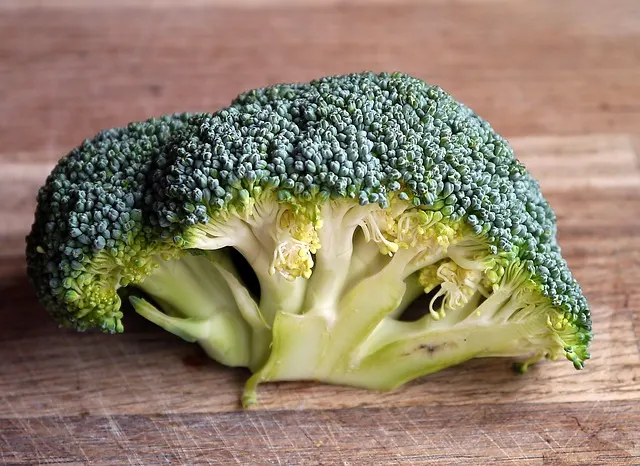
Yes, your dog can eat broccoli. However, dogs shouldn’t have too much broccoli, as it can harm them in larger quantities. Unfortunately, broccoli florets contain isothiocyanate, which causes gastric irritation in dogs. Generally, your dog shouldn’t have any problems if the amount of ingested broccoli is less than 10 percent of the daily food intake. On the other hand, more than 25 percent is toxic to dogs.
Fed in small amounts and without seasoning added broccoli is safe for dogs to eat. It’s low in fat and rich in fibers and vitamin C.
PRO TIP:
Cut up broccoli into bite-size chunks to prevent choking. Also, dogs can eat both raw and cooked broccoli.
Can Dogs Eat Brussels Sprouts?
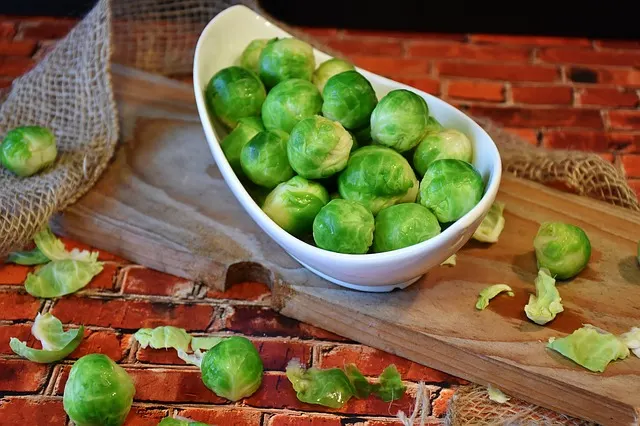
Brussels Sprouts are good for your dog. They are rich in antioxidants, vitamins, fiber, and compounds that protect the body from harmful, free radicals. However, dogs shouldn’t have too many Brussels Sprouts due to isothiocyanate. In larger quantities, this substance will cause stomach upset and gas. Generally, your dog shouldn’t have more than three Brussels Sprout per serving.
PRO TIP:
Don’t serve the Brussels Sprouts raw to your dog, as the dog will have difficulty do digest them. The best way to prepare Brussels Sprouts for your dog is to steam them, as steaming will preserve most nutrients. You can also boil or microwave them.
Can Dogs Eat Cabbage?
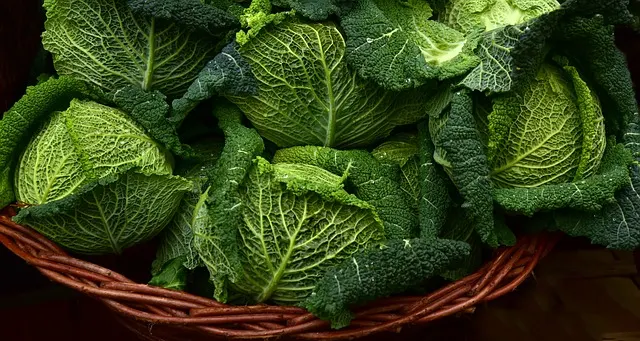
Generally, the cabbage is good and safe for dogs. However, you need to limit how much cabbage your dog can have at one time. Cabbage is rich in vitamins B1, B6, C, K, fibers, and essential minerals such as potassium, manganese, and copper.
Therefore, cabbage has many health benefits for dogs:
- Promotes a healthy GI system
- Boosts immune system
- Improves the health of the skin
- Reduces risk of heart disease
However, if ingested in larger quantities, the cabbage can cause an upset stomach.
PRO TIP:
Dogs can eat raw cabbage, but you should always cook it for easier digestion.
Can Dogs Eat Carrots?
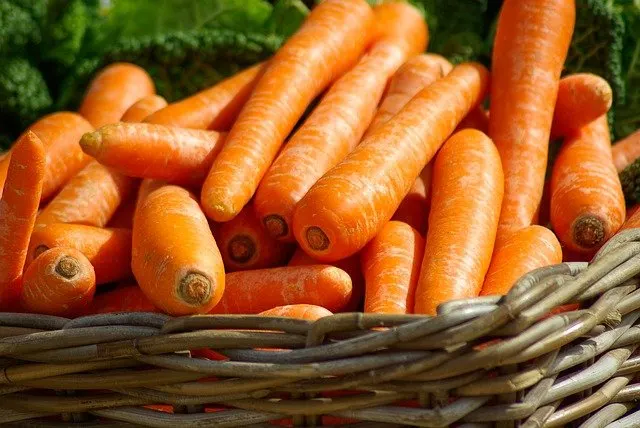
Carrots are perfectly safe for dogs, and dogs should have them as low-calorie snacks and treats. Rich in vitamin A, fiber, and potassium, carrots have many health benefits for dogs. Frozen carrots can also help with teething pain in puppies and improve the dental health of dogs.
PRO TIP:
Carrots are safe for dogs. However, always cut them to bit-size pieces to prevent choking.
Can Dogs Eat Cauliflower?
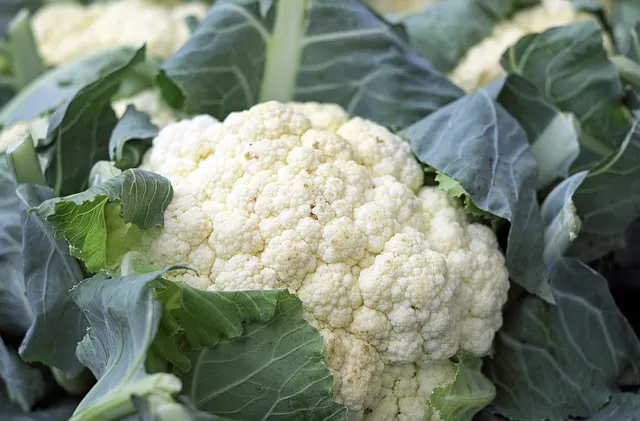
Dogs can safely eat cauliflower. In fact, cauliflower is an excellent source of vitamins, minerals, and other nutrients that are essential for the proper functioning of the dog’s body.
Cauliflower is rich in fiber, which is crucial for the health of the dog’s digestive system. Also, cauliflower is a great source of Vitamin C which improves and supports a dog’s immune system. Cauliflower also contains Vitamin K, calcium, potassium, folate all of which improve certain functions or systems of the dog’s body, such as blood health, vision, and eyesight, muscle, liver, etc.
Can Cauliflower be bad for dogs?
As we already said, dogs can have cauliflower. However, dogs shouldn’t have too much Cauliflower, because it can cause digestion issues and gas. Cauliflower should serve the purpose of occasional healthy treats in your dog’s diet. Also, remember that vegetables can’t replace a dog’s regular diet and should never make up more than 10% of your dog’s daily diet.
Preparing And Serving Cauliflower
The best option would be to steam cauliflower and cut it into bit-sized pieces. By preparing the cauliflower this way you are ensuring it keeps most of its nutrients, while also avoiding any possible chocking hazard.
Also, never season cauliflower you are planning to give to your dog or mix it with other veggies such as onions or garlic. Spices and these vegetables are toxic to dogs, so make sure to avoid them.
PRO TIP:
You can serve from a couple of tablespoons to a full cup of Cauliflower, based on your dog’s size.
Can Dogs Eat Celery?
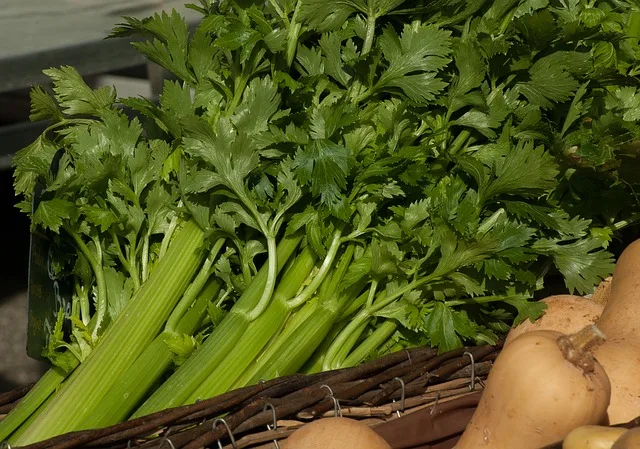
Celery is rich in vitamins A, C, K, fiber, potassium, folate, and manganese. Since it’s low in cholesterol and fat, celery is a perfect weight-loss treat for dogs. Generally, celery is safe for your dog. However, dogs should only have celery as a healthy snack and not a meal replacement. Like any other treat, celery shouldn’t make up more than 10 percent of a dog’s daily diet.
PRO TIP:
Small dogs can choke eating celery. Therefore, always cut the celery into bite-size pieces.
Can Dogs Eat Corn?

Corn is one of the most important grains for humankind. We often use it as a filler food, but the corn is also rich in nutrients, vitamins, and minerals. There is an agreement among veterinary nutritionists that dogs should have corn as a part of a well-balanced diet.
Corn is a good source of fiber that promotes digestive system health, it also contains antioxidants and proteins. So, dogs will certainly benefit from eating corn. However, you should avoid giving your dog corn on the cob as it can cause intestinal blockage.
Dogs can also eat unbuttered, unsalted, air-popped popcorn.
Can Dogs Eat Cucumbers?
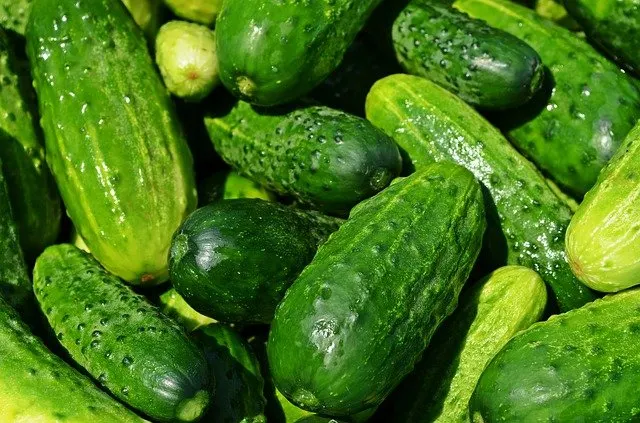
Cucumbers are a perfect low-calorie snack for dogs. Low in fat and sodium, they are the dog’s favorite healthy treat. Since cucumbers are 96 percent water, they are good for keeping your dog hydrated during the summer walks. Cucumbers are a great food for dogs that need to lose weight.
However, dogs shouldn’t eat too many cucumbers due to the risk of stomach upset. The general rule is that cucumbers shouldn’t make up more than 10 percent of your dog’s daily diet.
PRO TIP:
Always cut cucumbers into bit-sized chunks to prevent choking.
Can Dogs Have Green Beans?
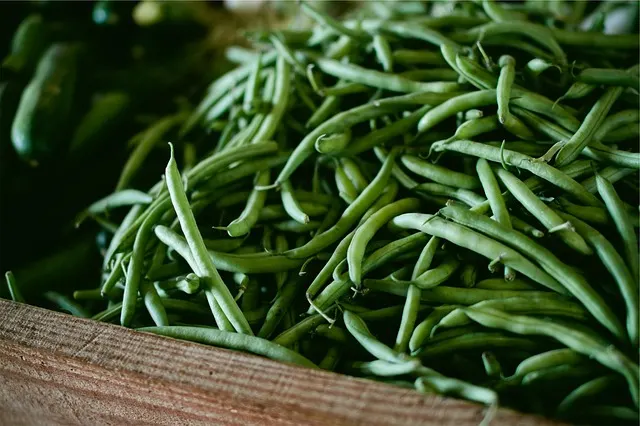
Not only are green beans safe for your dog, but they are also a vet-recommended healthy treat. Green beans are packed with essential minerals like iron, calcium, rich in vitamins A, B6, C, K, fiber, and low in calories. Therefore, they are an ideal, healthy treat for your dog. Dogs can eat a green beans diet to lose weight. However, don’t do this without consultation with your vet.
Like with any other treat, green beans should make up only about 10 percent of the dog’s daily diet.
Can Dogs Have Lettuce?
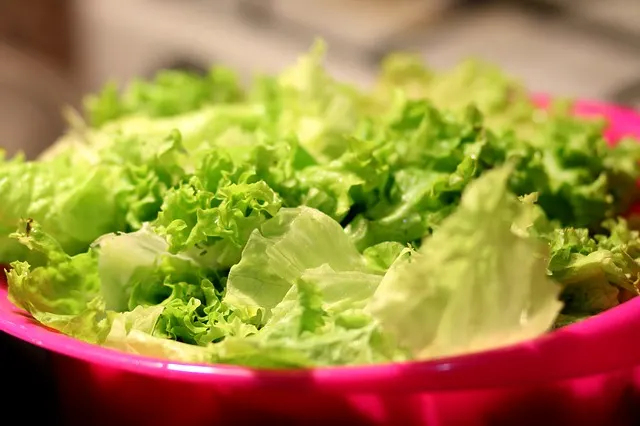
Lettuce is basically 90 percent water. Therefore, it doesn’t have any significant nutritional value for your dog. However, lettuce also contains fiber and beta-carotene, a pigment that is crucial in the production of vitamin A.
Generally, dogs can eat lettuce, but in moderate portions to prevent GI issues and diarrhea.
PRO TIP:
Before serving lettuce, wash it thoroughly and chop it up for easier digestion.
Can Dogs Eat Peas?
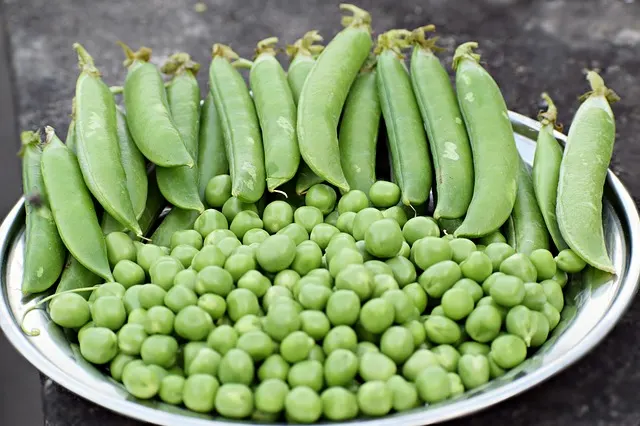
Can dogs have peas? The short answer would be yes! Peas are one of the healthiest vegetables for dogs. However, peas are not a good option for some dogs.
Peas are great for dogs as an occasional snack and a healthy treat. Dogs can eat all types of peas except for canned peas. Canned vegetables, in general, are not healthy for dogs and humans due to the added sodium. Snow peas, garden peas, and sugar snap peas are all safe for your dog to eat. Dogs can have peas frozen, thawed, or fresh, or even eat pea pods. However, be careful when feeding your dog pea pods as they can cause blockage in the dog’s throat and subsequent choking.
Peas are rich in vitamins A, B, K and minerals like magnesium, potassium, iron, and zinc. Peas also contain lutein, an antioxidant crucial for the health of the eyes, skin, and heart.
However, dogs that have kidney problems shouldn’t eat peas. Peas contain compounds that produce uric acid. In higher concentrations, uric acid will cause the occurrence of kidney stones and other kidney issues.
Can Dogs Eat Peppers?
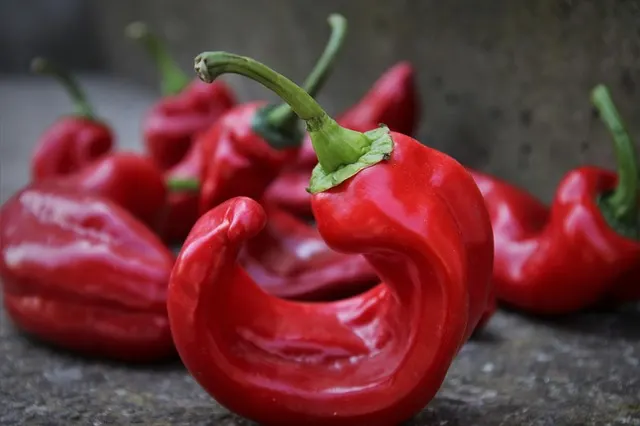
We have already mentioned that dogs can eat bell peppers. However, there are many different kinds of peppers, what about them? Well, the general rule is that dogs can eat sweet bell peppers while it’s not safe to give your dog any spicy variety.
For example, dogs can have a red pepper, but they can’t eat chili or black pepper.
Red peppers are, in fact, the most nutrients out of all bell peppers. For example, one red pepper contains 11 times more beta-carotene than the green one.
In moderate portions, red peppers are the perfect snack for your dog.
Can Dogs Eat Zucchini?
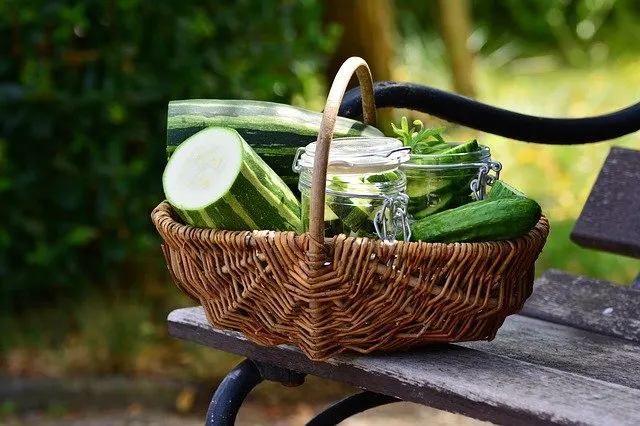
Zucchini is one of those perfectly safe vegetables dogs can eat. It is low in fat and cholesterol and has lots of vitamins, fiber, and minerals that are good for your dog’s health. However, like with any other vegetable, dogs should have limited amounts of zucchini. Basically, we need to apply the “treat rule” when determining the amount of zucchini your dog can eat. Therefore, zucchini can make up for no more than 10 percent of your dog’s daily diet.
Dogs can eat zucchini raw, cooked, or steamed as long as it wasn’t seasoned.
PRO TIP:
Don’t feed an entire zucchini to a dog due to the risk of choking. Instead, chop the zucchini into smaller pieces that are easy to chew and swallow.
The Grey Zone
These are the vegetables dogs can eat. However, just because the dogs can eat these vegetables, does not necessarily mean that it should eat them.
Can Dogs Eat Asparagus?
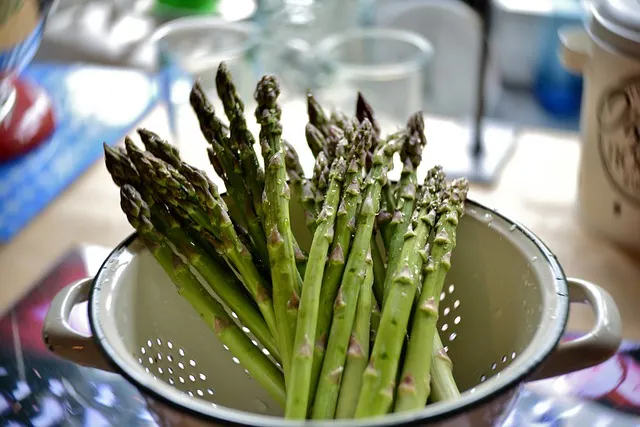
Asparagus on its own is not toxic to dogs. However, the asparagus fern, an inedible part of the plant, is toxic to dogs. So be careful when feeding asparagus to your dog. Dogs can have asparagus, but it is tough for them to chew it. The obvious solution would be to boil or steam asparagus. However, every time you boil a vegetable, it loses some of its nutrients and vitamins. Therefore, it’s hard to find a reason why to feed asparagus to your dog when you have better solutions in the likes of carrots, cucumbers, or celery.
It is also important to note that asparagus causes a bad smell of urine in dogs and humans.
Can Dogs Eat Olives?
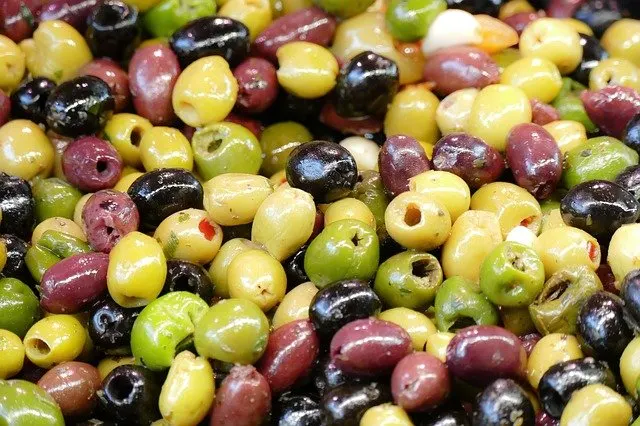
Plain, unsalted, pitted olives are perfectly safe for your dog. However, dogs should never have olives that have been soaked in alcohol or coated in seasoning, oils, or garlic. Plain olives will be a great, occasional snack for your dog. Make sure that you remove the pit before giving your dog an olive. The olive pits can cause obstructions and choking in dogs and also crack teeth.
Avoid canned olives as they contain a large amount of sodium which is harmful to dogs.
Can Dogs Eat Potatoes?
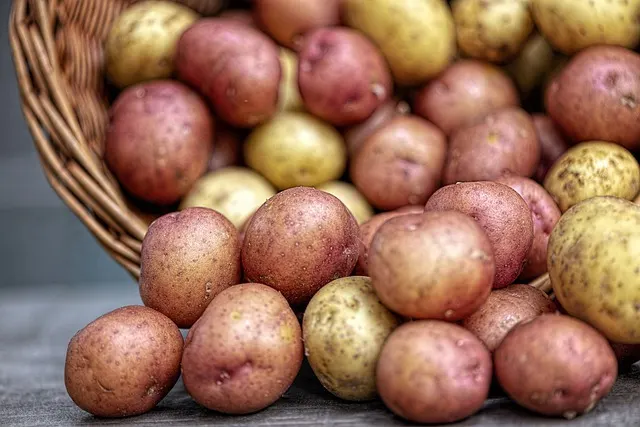
Your dog can eat potatoes. However, dogs should only have potatoes that are baked or boiled and with no added seasoning. Never give your dog a raw potato as it contains a toxic compound called solanine. Also, avoid potato chips, french fries, and potatoes with butter.
It is important to notice that dogs suffering from diabetes should not eat potatoes due to high sugar content.
Can Dogs Eat Sweet Potatoes?
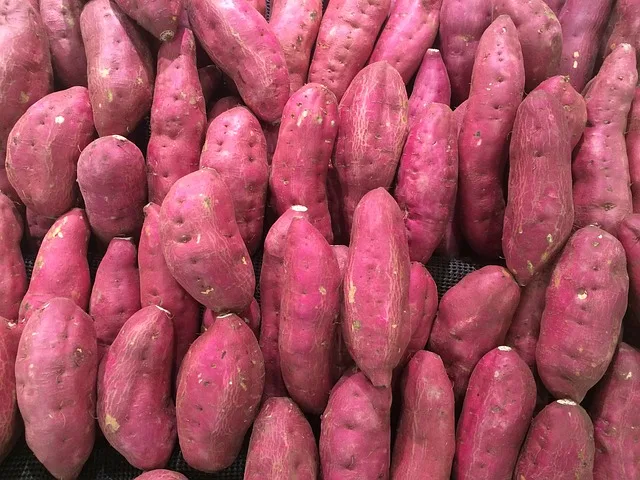
Yes, dogs can have sweet potatoes. As a matter of fact, sweet potatoes are a healthier option than regular potatoes due to the higher nutritional value.
Sweet potatoes are rich in minerals such as magnesium, potassium, calcium, and iron. They also contain important vitamins like vitamin A, B6, and vitamin C. However, sweet potatoes also contain high levels of sugar which can cause weight gain or health issues in diabetic dogs.
Can Dogs Eat Spinach?
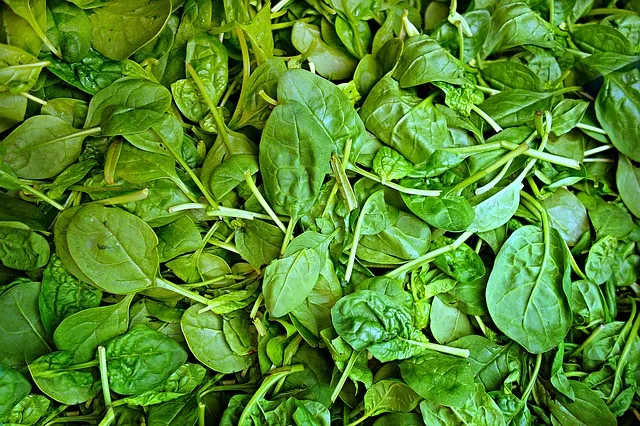
When we talk about vegetables that dogs can eat, spinach is probably the most controversial vegetable. There is a reason for this controversy. Namely, because spinach is both good and bad for your dog at the same time.
Rich in vitamins A, B, C, K, antioxidants, iron, beta-carotene, spinach is healthy food. However, spinach also contains high quantities of oxalic acid. This acid blocks absorption of calcium inside the dog’s body and can cause kidney failure.
However, your dog would need to eat large amounts of spinach to cause this kind of damage to its kidneys. Although this may be true, even long-term consumption of smaller quantities of spinach can cause damage to kidneys, muscle weakness, and respiratory paralysis.
Dogs can have spinach, but it is highly debatable whether benefits outweigh risks.
Can Dogs Eat Tomatoes?
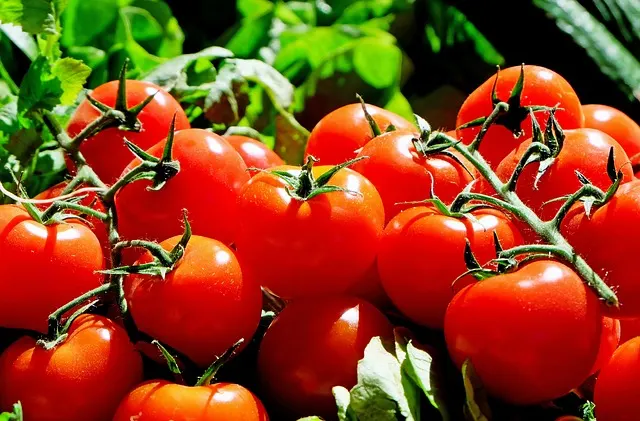
Tomatoes can be a problematic food for dogs due to higher amounts of solanine, especially in the stem and leaves of the plant. Green tomatoes have a high concentration of solanine, while that concentration is much lower in a fully ripe tomato. Therefore, it is safe to feed ripe tomatoes to your dog. However, dogs should only have tomatoes as an occasional snack. Also, make sure to keep your dog away from the tomato plants if you have a garden.
If your dog eats leaves or green tomatoes, he could experience signs of tomatine poisoning.
Usual clinical signs of tomatine poisoning include:
- Cardiac arrest
- Seizures
- Shivering
- Loss of coordination
- Gastrointestinal issues
- Muscle weakness
Vegetables That Dogs Should Never Eat
Following vegetables are generally bad for the health of your dog and you should avoid feeding them to dogs.
Can Dogs Eat Garlic?
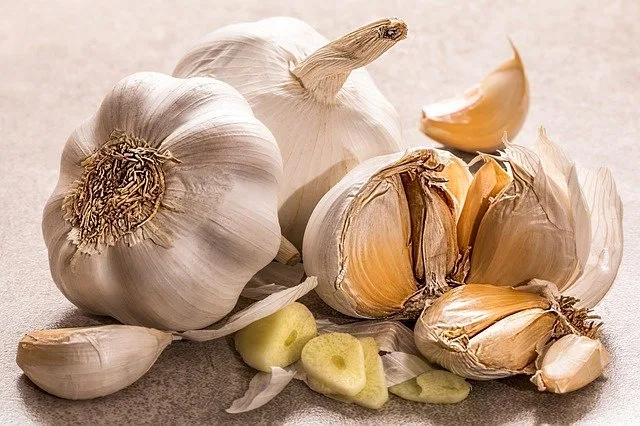
Like onions, garlic has a toxic compound that destroys red blood cells and causes anemia in dogs. Therefore, dogs should never have garlic, and I would advise that you also avoid dog garlic supplements. Despite the recommendation by some owners, we still don’t have enough evidence to confirm they are safe for dogs. Also, avoid feeding garlic bread to your dog as it has absolutely no nutritional benefits for your dog.
Symptoms of garlic poisoning are :
- Dehydration
- Vomiting
- Diarrhea
- Panting
- Pale gums
- Depression
- Loss of appetite
- Dark-colored urine
- Jaundice
- Abdominal pain
Note that your dog would have to eat a lot of garlic to be sick. However, some dogs are more sensitive to the toxins found in garlic than others. So, it’s best to completely avoid it.
Can Dogs Eat Mushrooms?
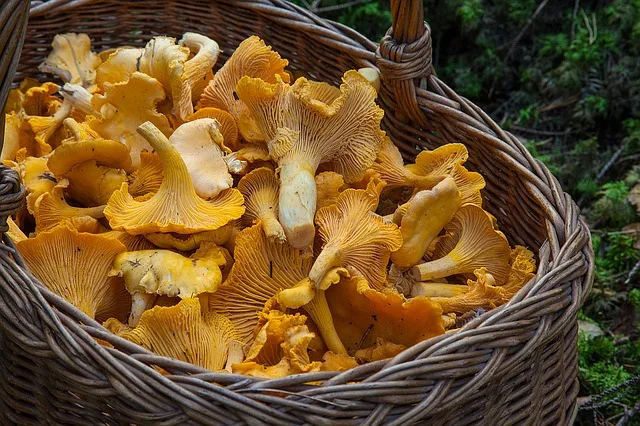
Let’s make one thing clear in the beginning. Dogs don’t need mushrooms in their diet, and it’s simply not worth the risk.
Wild Mushrooms, An Incredible Risk
Even if you don’t feed mushrooms to your dog, he can still come in contact with them, taste them out of curiosity or completely ingest them during the walk in the forest. These are life-threatening situations, and in these cases, you need to visit the vet immediately. Make sure to take a photo or wrap up a sample of the mushroom your dog ate. By doing this, you will help your vet to determine the proper treatment.
Contrary to popular belief, dogs don’t know to differentiate between poisonous and edible mushrooms. In fact, it’s believed that mushrooms are responsible for a huge portion of fatal poisoning in pets.
These wild mushrooms are the most poisonous to your dog.
- Deadly Galerina (Galerina marginata)
- Deadly Agaric (Amantia muscaria)
- Death cap (Amantia phalloides)
- Jeweled death cap (Amantia gemmata)
- False morel (Gyromitra spp.)
Symptoms of mushroom poisoning include:
- Liver failure
- Abdominal pain
- Vomiting
- Diarrhea
- Weakness
- Salivation
- Lethargy
- Seizures
- Coma
- Death
The symptoms of mushroom poisoning will differentiate based on the type of toxins the mushroom contains.
Store-Bought Mushrooms
Dogs can have store-bought mushrooms, but they are a completely unnecessary addition to the dog’s diet. However, if you want to feed store-bought mushrooms to your dog, make sure to serve them plain without any seasoning or additives.
Can Dogs Eat Onions?
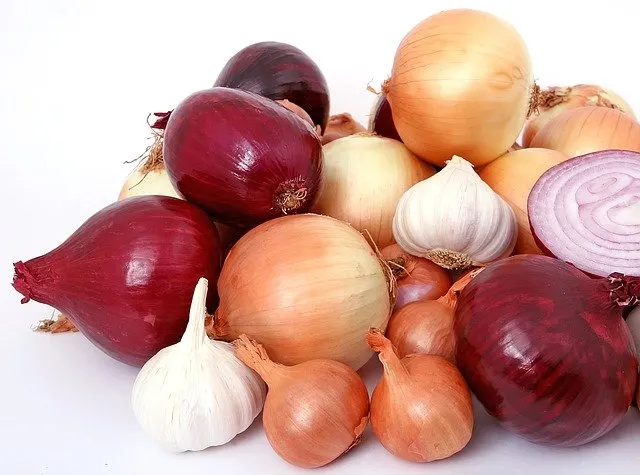
Onions are a big “NO” for our furry friends. Dogs should never have onions on their menu due to the serious harm they can cause them. Onions contain N-propyl disulfide, a toxic compound that breaks down red blood cells in dogs, thus causing hemolytic anemia.
Every part of the onion is toxic to dogs. It only takes one medium onion to cause serious harm to a 45-50 pound dog.
Clinical signs of onion toxicity in dogs
- Pale gums
- Fainting
- Loss of appetite
- Weakness
- Vomiting
- Panting
- Elevated heart rate
- Lethargy
Onion toxicity can be fatal for dogs. Therefore, in case your dog eats onions, take him to the vet immediately.
Can Dogs Eat Pickles?
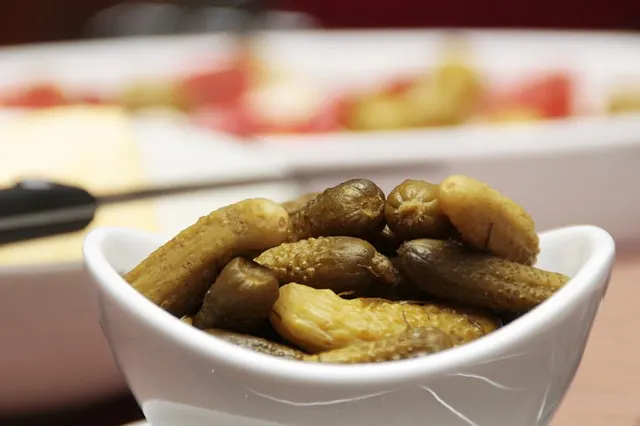
The answer is a definite “No!“Dogs should never have pickles! Pickles are cucumbers preserved in a mixture of vinegar, salt, and other spices. Therefore, they contain high amounts of sodium which is harmful to your dog. Even though pickles contain minerals and vitamins that are beneficial to dogs, the risks simply outweigh the benefits by a large margin. If you want a healthy vegetable treat for your dog, give him a fresh cucumber instead.
Can Dogs Eat Radishes?
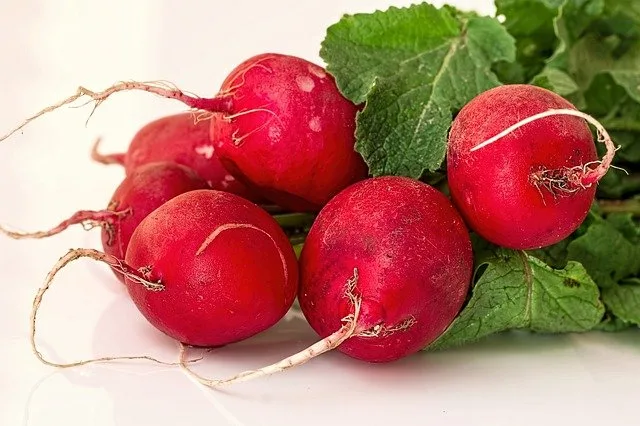
Radishes are one of the most popular vegetables in the world. They are tasty, healthy, crunchy and they are an excellent addition to most salads. We love radishes and we know they are good for us, but what about our dogs?
Can dogs eat radishes?
Yes, our furry friends can eat radishes. In fact, radishes are one of the healthiest vegetables our dogs can eat.
Radishes are packed with fiber which is crucial for the good health of the dog’s digestive system. They also contain Vitamin C which is essential for the proper functioning and strength of a dog’s immune system.
Radishes also have low energy output and contain a wide variety of other essential vitamins and minerals. Therefore, these vegetables are perfect as healthy treats for overweight and obese dogs.
Also, the texture of radishes will help in removing plaque from your dog’s teeth.
Could Radishes Be Bad For Dogs?
Radishes are not toxic to dogs. However, don’t give your dog too many radishes as that may cause gastrointestinal issues and gas.
Generally, radishes or any other veggie for that matter should not make up more than 10% of the dog’s daily diet.
How To Serve Radishes To Your Dog?
Radishes can be served fresh or frozen as a crunchy treat. You can also slice or chop radishes and sprinkle them on top of the dog’s regular food.
PRO TIP:
Don’t season the radishes you serve to your dog or combine them with garlic or onions as they are toxic to your dog.
Can Dogs Eat Quinoa?
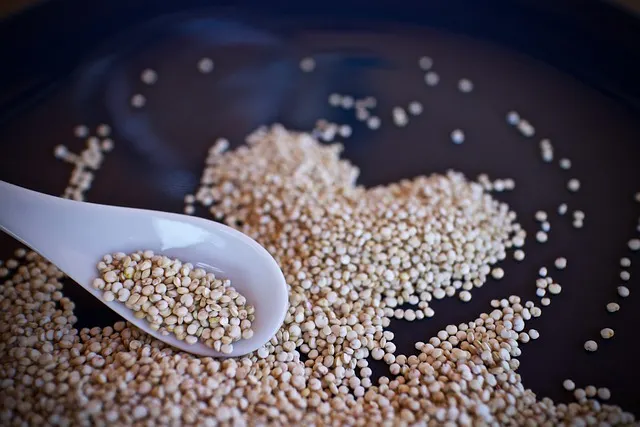
Quinoa is a healthy, gluten-free alternative to grains. It’s very healthy for us humans as it’s packed with nutrients that are essential for the proper functioning of our bodies. However, as we all know, just because something is good for me it doesn’t mean it’s good for my dog. But, is quinoa safe for dogs, and can they eat it?
Is Quinoa Good For Dogs?
Yes, quinoa is good for dogs and they can safely eat it. Quinoa is rich in antioxidants, fatty acid linoleic acid, iron, magnesium, B-vitamins. Quinoa also improves the health of the dog’s cardiovascular system.
High levels of antioxidants give quinoa healing and anti-inflammatory properties. Antioxidants reduce freed radicals, thus reducing the risk of certain diseases such as cancer.
Can Quinoa Be Bad For Dogs?
As we have already said, Quinoa is safe for dogs to eat. However, not every dog can eat it. Some dogs are sensitive or allergic to quinoa.
A dog that doesn’t tolerate quinoa well will show the following symptoms:
- Drooling
- Vomiting
- Loss of appetite
Also, quinoa produces a compound called saponin to protect itself from insects. Studies have shown that saponin could cause irritation and digestive issues in both humans and dogs.
However, there are only traces of saponin on the quinoa, amount too small to cause any health issue. On the other hand, the digestive system of dogs could be more sensitive than ours.
Therefore, we need to be careful when feeding our dogs quinoa and other vegetables that dogs can eat. It’s important to give them small amounts first and observe their reaction, and then gradually increase the amount.
Also, ask your vet for advice before introducing new food to your dog’s diet.
How To Prepare And Serve Quinoa To Your Dog?
Always wash quinoa before cooking it to remove most of the saponin. Also, never season quinoa or cook it with garlic or onions as spices and these vegetables are toxic to dogs.
Seaweed also known as sea vegetables are forms of sea algae. These are very healthy and versatile vegetables we use in many of our dishes. However, just because something is good for us it doesn’t automatically mean it’s good for our dogs.
Can Dogs Eat Seaweed?
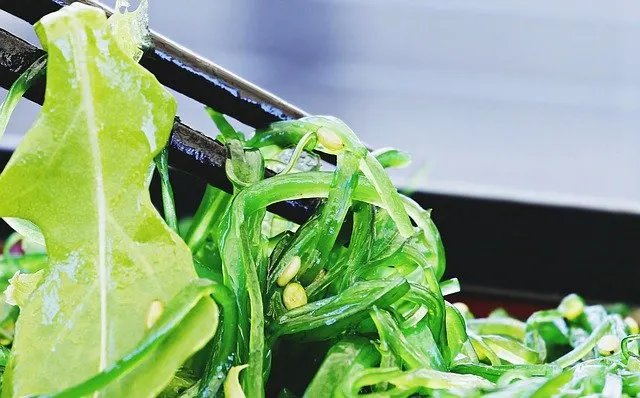
Yes, dogs can eat seaweed, more precisely, dogs can eat certain types of weed. Wet food-grade kelp and sushi sheets (Nori) are the safest options for dogs to eat.
Is Seaweed Good For Dogs?
Yes, seaweed is excellent for the health of your dog. These vegetables have many benefits for dogs. Seaweed contains trace elements of 21 amino acids and 60 different beneficial vitamins. Therefore, seaweed is very healthy for dogs, it improves the health of their skin and their cognitive abilities.
Can Seaweed Be Bad For Your Dog?
Dogs should never eat dried seaweed. Dried seaweed is nothing more than seaweed in dehydrated form. However, if a dog eats dried seaweed it will expand in his stomach and cause serious, even fatal digestive blockages. According to studies, one-third of the dogs that ingest dried seaweed will die.
How To Prepare And Serve Seaweed To Your Dog?
Seaweed is naturally salty. However, it’s actually low in salt. You can sprinkle seaweed on top of your dog’s regular food or give it as a treat. However, don’t season seafood or mix it with other vegetables that are toxic to dogs, such as garlic or onions.
Can Dogs Have Lima Beans?

Lima beans, also known as butter beans, Madagascar beans, double beans, wax beans, sieva beans, or chad beans are plants grown for their edible beans or seeds.
Can Dogs Have Lima Beans?
Lima beans are one of those vegetables dogs can safely eat. However, you need to properly prepare them before serving them to your dog. Raw and undercooked lima beans will be hard for your dog to digest and can cause unpleasant gastrointestinal issues. Also, avoid feeding your dog canned or dried lima beans.
Canned lima beans contain large amounts of sodium and other preservatives such as potassium sulfite and sulfur dioxide. These are bad for your dog and can lead to potentially fatal conditions such as bloat.
Dried lima beans will most certainly damage the dog’s teeth and cause gastrointestinal issues.
What Are The Benefits Of Lima Beans For Dogs?
There are several important benefits of feeding your dog lima beans. They are packed with fiber and plant protein, which makes them a great option for overweight and obese dogs. Fiber is essential for the health of the dog’s digestive system, but it will also make the dog feel full and eat less. Fiber also plays an important role in the protection of the colon and regulation of the sugar levels in the blood.
Dog’s also need a protein-rich diet to stay healthy, grow and develop their muscles, and lima beans provide plenty of plant protein.
Lima beans are also rich in iron, potassium, folate, and low in fat, which makes them good food for an obese dog and their red blood cells and cardiovascular system.
Can Lima Beans Be Bad For Dogs?
The biggest issue with feeding your dog lima beans is gas. Lima beans contain particular sugar that the dog’s digestive system can’t fully break down. Therefore, it causes gassiness. Even though this will lead to an unpleasant odor in the house, it’s nothing to worry about.
However, if your dog is having an upset stomach, abdominal pain, nausea, diarrhea or he is vomiting you should visit the vet. Usually, these are the signs of too much fiber in the dog’s diet or legume intolerance.
Also, as we have already said above, you should never feed your dog canned or dried lima beans.
How To Prepare And Serve Lima Beans For Your Dog?
Before cooking lima beans, let them soak in water for at least five hours. When they have stayed in water long enough, drain them, cover them with fresh water and boil them. Don’t add any spices or other vegetables that are bad for your dog.
After they are cooked, let the lima beans cool off before serving. You can either serve lima beans alone or mix them with dry or vet dog food. You can also drain them, pack them in smaller portions, and put them in the freezer for later use.
PRO TIP: When buying lima beans, pick those that are whole, plumb, and uncracked. Don’t buy lima beans that seem dry, yellowish, or spotted.
Can Dogs Eat Jicama?

Jicama, also known as a yam bean is a globe-shaped root vegetable native to Mexico. It’s crunchy and juicy with a sweet and nutty flavor.
Can Dogs Eat Jicama?
Yes, dogs can eat jicama. In fact, jicama is extremely healthy for dogs. However, there are several precautionary measures you should take when feeding your dog jicama.
First of all, humans and dogs can only eat the root of jicama. The root is that white globe-shaped part of the plant. Leaves and seeds are not edible. Jicama seeds and leaves contain rotenone. This is a toxin that acts as an insecticide, but it’s also toxic to both dogs and humans. Mature seeds also present a choking hazard for dogs.
Therefore, it’s crucial that you remove all the seeds and leaves before serving jicama for your dog.
What Are The Benefits Of Jicama For Dogs?
Jicama belongs to the vegetables that dogs can safely eat. In fact, it’s one of the vegetables that offer several health benefits for dogs who eat them. It’s packed with vitamin C which is crucial for the proper functioning of your furry’s friend’s immune system. Jicama is low in calories but full of fiber. This combination makes jicama a perfect option for overweight and obese dogs as well as for dogs that suffer from pancreatitis or diabetes.
Inulin, a prebiotic fiber in jicama, is essential for the proper functioning of the dog’s digestive system. It acts as a basis and food for the development and growth of good bacteria in the dog’s gut. Fiber also creates a sense of “fullness” in dogs making them eat less, which is perfect for dogs that need to lose weight.
Inulin also increases the dog’s bowel movement up to 31 percent, which makes jicama a perfect option for dogs with constipation.
Jicama is also loaded with antioxidants such as selenium, vitamin C, vitamin E, and beta carotene. These antioxidants protect cells from harmful molecules which are known as free radicals.
Free radicals cause oxidative stress in cells, which is known to cause serious diseases such as cancer, cognitive brain disorders, heart disease, etc.
Jicama is also rich in two nutrients that are essential for the good cardiovascular health of the dog. It contains potassium which helps lower the dog’s blood pressure by relaxing his blood vessels. According to the studies, potassium also protects the dog from strokes, heart disease and improves circulation.
Another important nutrient in jicama is soluble dietary fiber. SDF naturally lowers the bad cholesterol in dogs by preventing the bile from reabsorption in the intestines.
Can Jicama Be Bad For Dogs?
The biggest concern with jicama is that your dog may accidentally eat leaves, seeds, or skin. These are all toxic to your dog. However, as long as you feed your dog just the root of jicama, there is nothing to worry about.
How To Prepare And Serve Jicama
Dogs can eat both raw and cooked jicama. If you own a puppy whose teeth are still developing, it’s best to shred and cook the jicama to prevent teeth injuries. On the other hand, adult dogs can eat raw jicama without any issues. However, it’s preferable that you cook the jicama to mitigate the effect it may have on the dog’s digestive system.
You can either give jicama as a standalone snack or sprinkle it on top of the dog’s regular food. Remember, dogs can be sensitive to new food in their diets. This sensitivity manifests itself through digestive issues such as diarrhea, vomiting, upset stomach, or digestive discomfort.
Therefore, introduce jicama slowly and only offer your dog small amounts for the first week or two. Monitor your dog’s reaction after feeding him jicama and look for signs of discomfort.
Conclusion
Dogs are carnivorous, and they don’t really need nutrients from vegetables. However, some vegetables can be extremely good as healthy snacks and treats. On the other hand, dogs can not eat certain vegetables, such as onions and garlic, due to the toxic compounds. Eating these vegetables will cause serious harm to dogs and can even cause death. Before you decide to feed vegetables to your dog, please consult your vet to determine if this is a safe option for your dog. Also, the vet will determine how much of certain vegetables your dog can eat.

